Pierrot and Pierrette are stock characters in the theater art of pantomime. In general, pantomime is an ancient (Roman) dramatic entertainment. It is a peculiar kind of theatre that is often accompanied by music, but has no dialog. The actors are given blocking instructions, that limit the number of movements, but not the variety of props. The theme or topic is left to improvisation using gestures, exaggerated expressions, and creative staging.
The art form is popular worldwide, but it was most enthusiastically adopted by the British in the late eighteenth century. Primarily in England, pantomime was entertainment for children. Its stage actions involved visual jokes and slapstick comedies that were often based on fairy tales and nursery rhymes that children would recognize.
The pierrot’s face and costume were a standard white. His face was painted, in much the same way that clowns present themselves, but without contrast of any kind, e.g., no red lips nor black eyeliner. The pierrot is always dressed in baggy pants and a full and flowing, blousy shirt with bouffant sleeves and a ruff collar.
In American English, these words are pronounced Pie’ rou and Pie’ reet. Neither appear in a standard English language dictionary, likely because of their foreign origin.
**
Pierrot and Pierrette postcards are plentiful but are usually priced in the extreme. It seems that since the art form originated in Italy, it has been the Italian artists who have most vigorously embraced the illustration of the pantomime. Among the Italians who have left us their very best are Carlo Chiostri, Adolfo Busi, and Giovanni Meschini.
But equally collectable, the British who are not to be outdone are H. D. Sandford, Tom Browne, Agnas Richardson, Lance Thackeray, and a very obscure illustrator named Crow – who is responsible for the Pierrot set that is featured here – Tuck series #767.
The set is staged beneath the phases of the moon. From New Moon through Waxing and Waning Crescents the Pierrot pursues his quest with equal efforts that fail and succeed. His props include his spirit ribbons, an epee, the shoes of his Pierrette and the light of the moon.
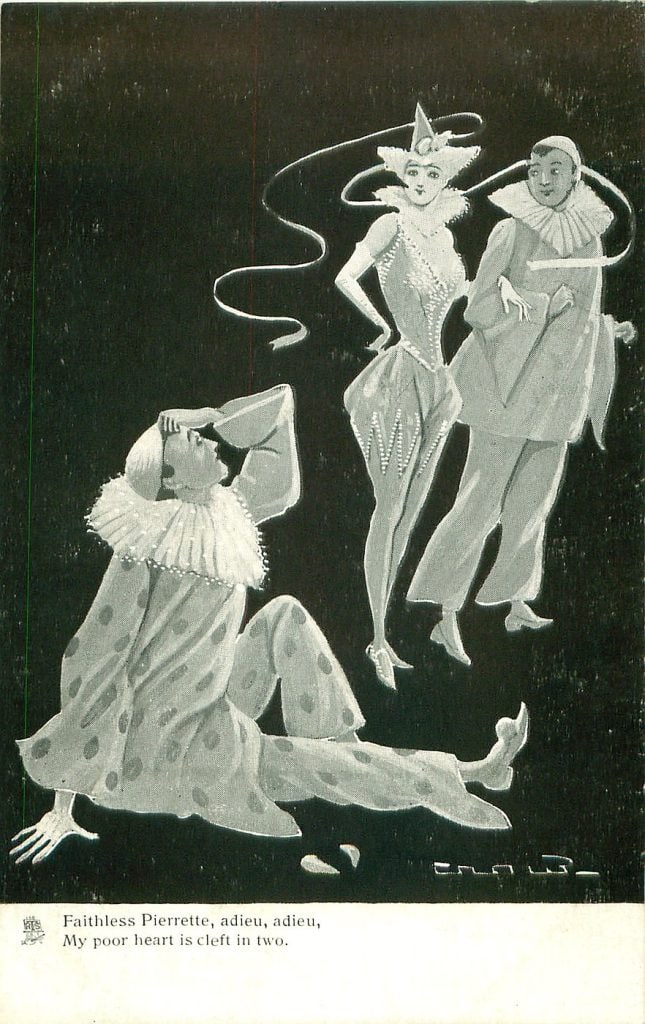
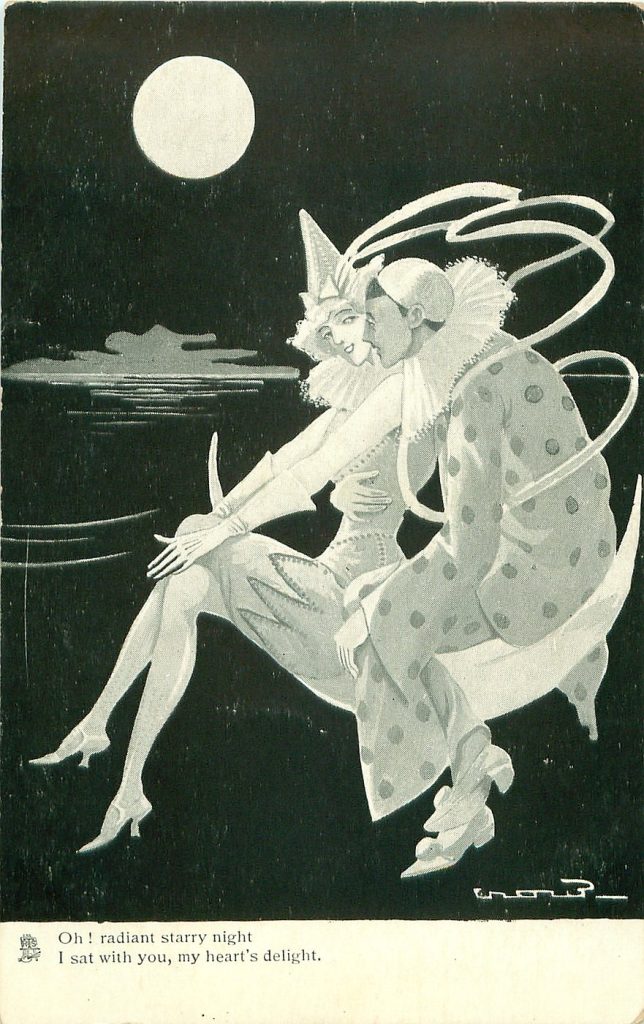
An Overture (left) and A Tiff by H. D. Sandford, two cards from a Tuck set of six sold in Great Britain and the USA
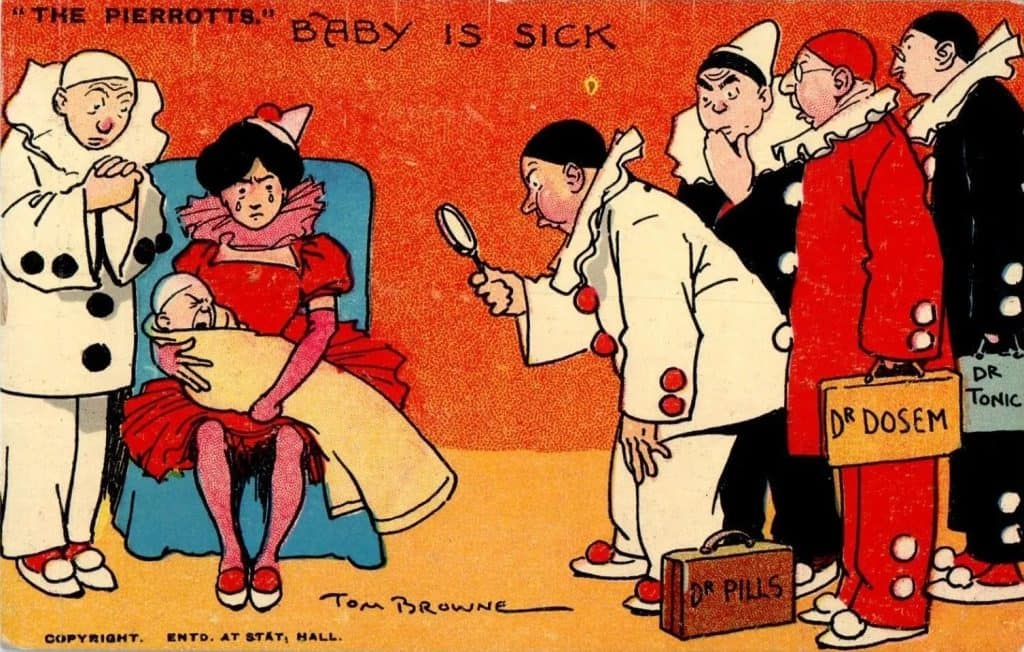
Most amusing is the trio of doctors, namely, Dr. Pills, Dr. Dosem, and Dr. Tonic who seem eager to prescribe cures.
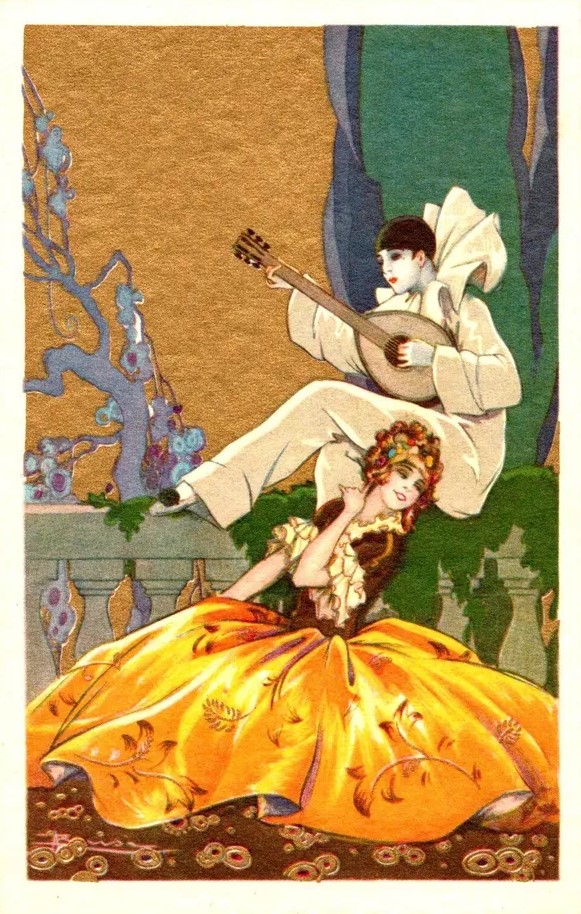
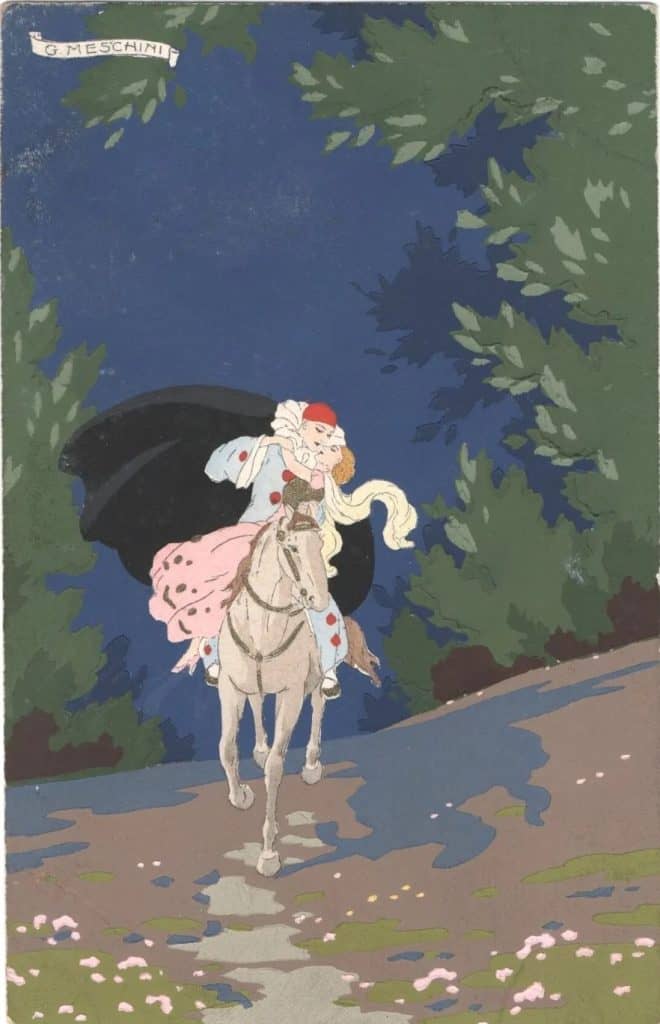
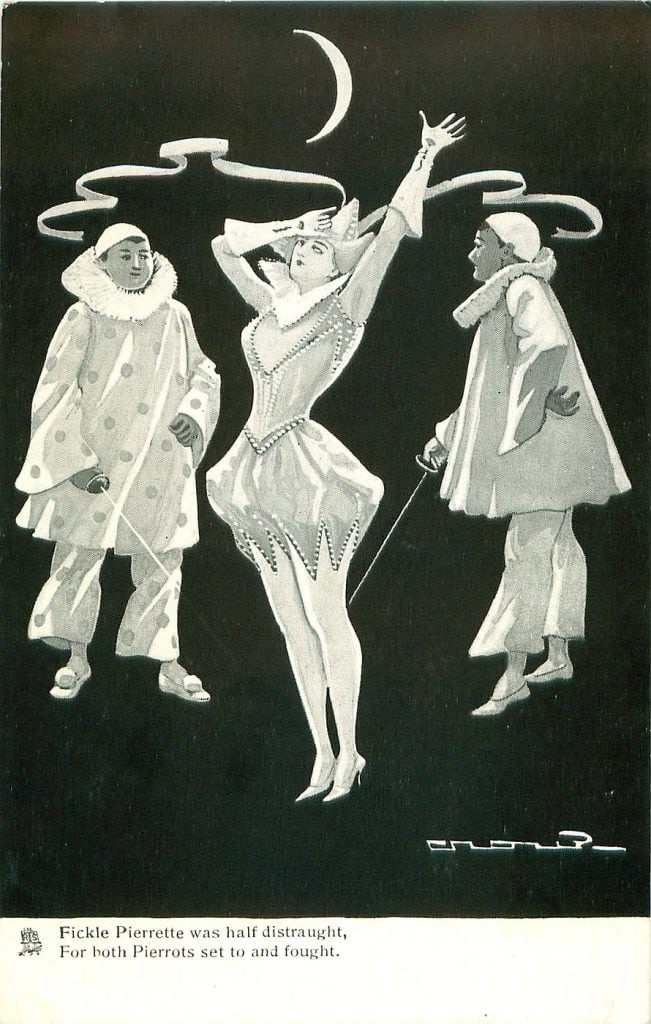
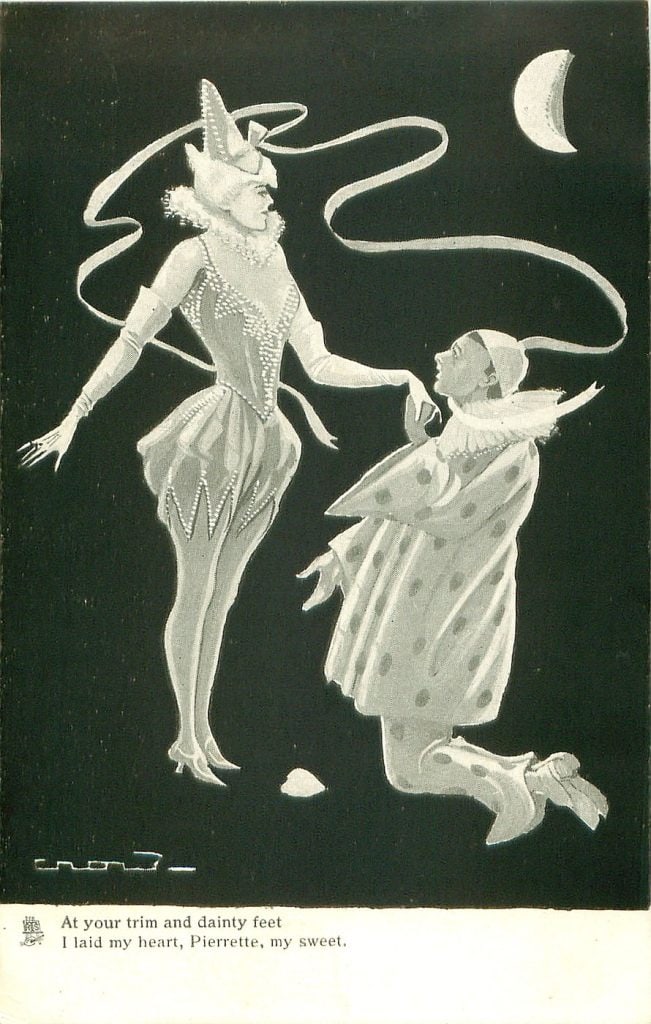
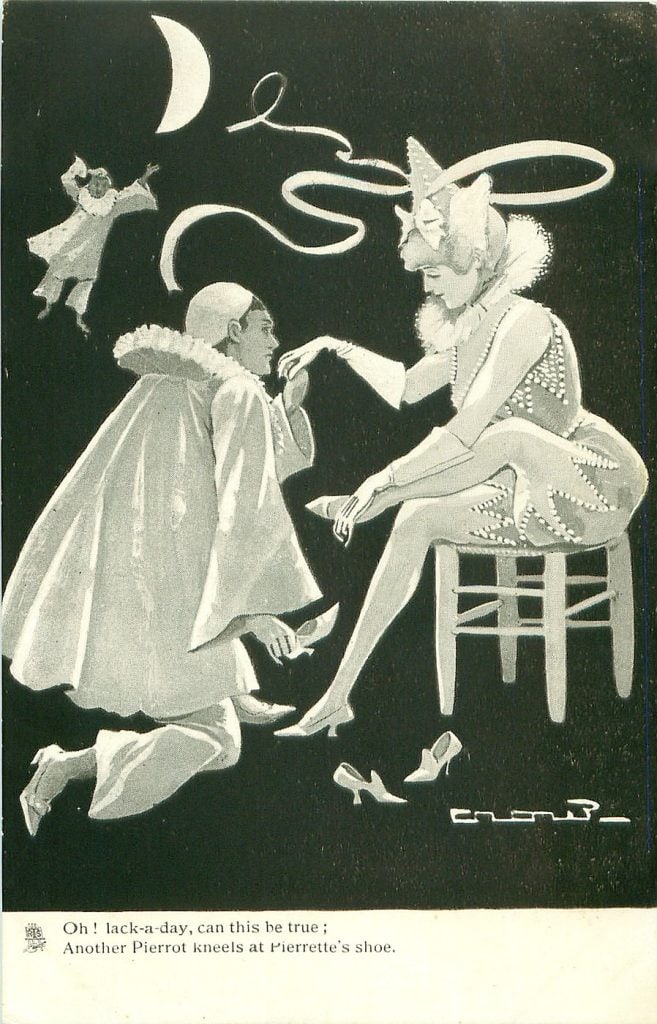

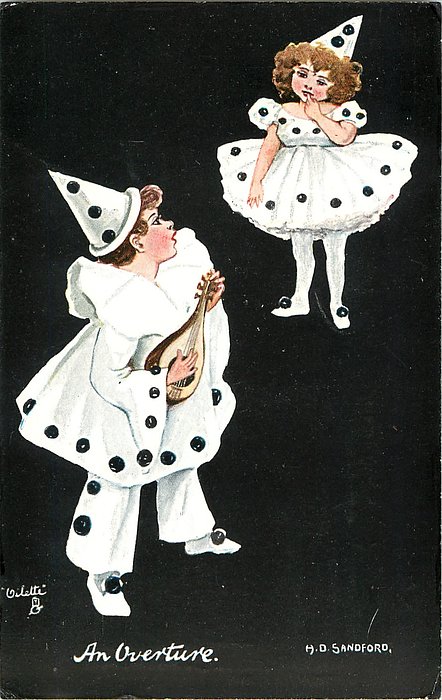

Au clair de la lune, the oldest known recording, dates to 1860 and mentions “mon ami Pierrot”.
Do not forget the famous Pierrot at Tivoli Gardens, Copenhagen, Denmark